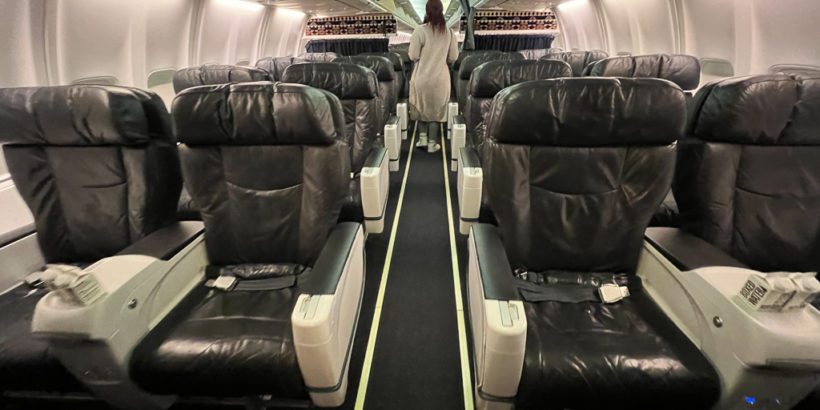Have you ever wondered how many flight attendants will be on your next plane?
Perhaps it is the holiday season and you want to spread some holiday cheer by giving each of the crew members a special gift. Or perhaps you are just curious about the type of service you might receive.
Below, we have broken down what the law requires and provided some concrete examples to give you an idea of how many crew members you can expect to encounter on your next flight.
It’s not always an exact science but you’ll have a pretty good idea of what to expect on your next trip!
Table of Contents
How many flight attendants are on a plane?
The FAA requires by federal statute that airplanes have at least one flight attendant per 50 passengers.
This means that your average short-haul aircraft in the US will have 3 to 4 flight attendants, medium-haul aircraft will have 5 to 6 flight attendants, and a large, long-haul aircraft will have around 8 to 12 flight attendants.
However, these numbers can vary based on a number of factors that we talk about below. Keep reading for more!
Tip: Use the free app WalletFlo to help you travel the world for free by finding the best travel credit cards and promotions!
FAA requirements
14 CFR § 121.391 is the federal statute that matters for the US and it can be simplified into the following four elements:
- Airplane with maximum payload capacity of more than 7,500 pounds and seating capacity of 10 to 50 requires one flight attendant.
- Airplane with maximum payload capacity of 7,500 pounds or less and seating capacity of 20 to 50 requires one flight attendant.
- Airplane with seating capacity of 51 to 100 requires two flight attendants
- For every 50 passengers above 100 passengers, there must be one additional flight attendant
Other countries may have similar requirements but the ratio of passengers to flight attendants may be slightly different.
For example, the Canadian Aviation Regulations require one flight attendant for every 40 (carried) passengers.
In Australia, that ratio appears to have generally been one flight attendant for every 36 passengers although that looks to have changed?
On an international level, the International Civil Aviation Organization does not provide specific guidance on a number of flight attendants needed per passenger and instead refers to the local state operators.
So getting back to the FAA requirements, here’s the breakdown of how many flight attendants would be required in the US based on the number of seats on an aircraft.
| Seats | Flight Attendants |
| 20 to 50 | 1 |
| 51 to 100 | 2 |
| 101 to 150 | 3 |
| 151 to 200 | 4 |
| 201 to 250 | 5 |
| 251 to 300 | 6 |
| 301 to 350 | 7 |
| 351 to 400 | 8 |
| 401 to 450 | 9 |
| 451 to 500 | 10 |
| 501 to 550 | 11 |
| 551 to 600 | 12 |
| 601 to 650 | 13 |
| 651 to 700 | 14 |
| 701 to 750 | 15 |
| 751 to 800 | 16 |
| 801 to 850 | 17 |
| 851 to 900 | 18 |
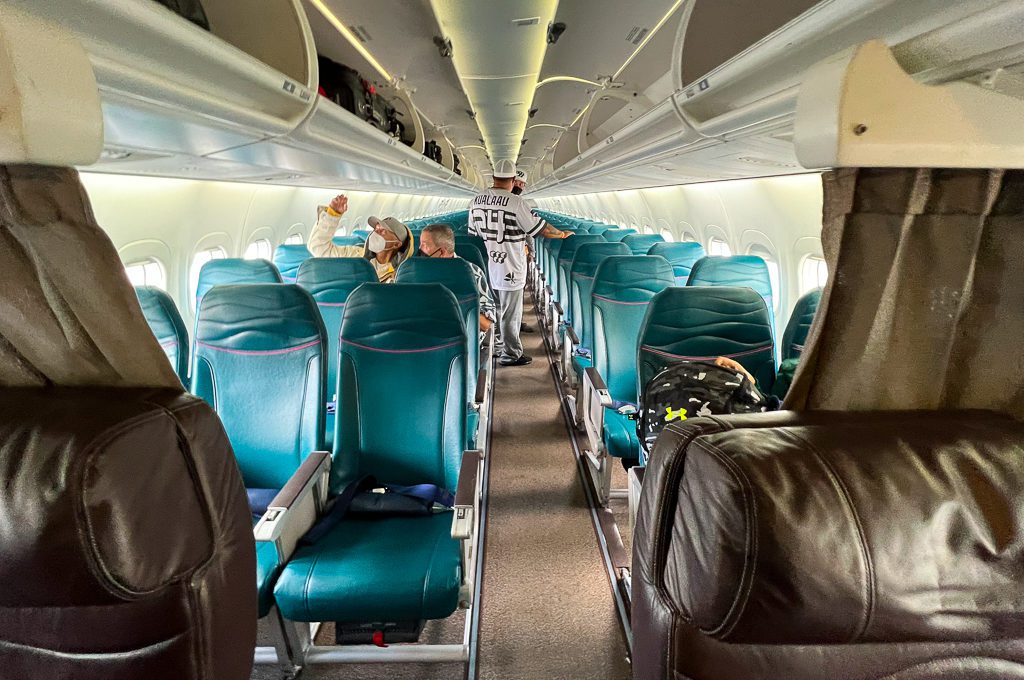
Why is there a minimum limit on flight attendants?
One of the main reasons for requiring a certain number of flight attendants for every 50 passengers is that it helps to provide assistance for emergency exits.
As the size of the aircraft grows, you’ll find more emergency exits located throughout the cabin.
With more flight crew, there will be more trained personnel to help passengers get through those emergency exit doors or windows.
Indeed, the US statute even references this.
During takeoff and landing, flight attendants required by this section shall be located as near as practicable to required floor level exits and shall be uniformly distributed throughout the airplane in order to provide the most effective egress of passengers in event of an emergency evacuation.
The ultimate goal is to allow an aircraft to be evacuated by the cabin crew within the required 90 seconds.
When you take a look at some of the language in the § 121.391 statute, you may also also notice that the statute applies to the number of seats and not the number of occupied seats.
That’s probably because it would be so difficult to fluctuate the number of flight attendants based on the number of occupied seats.
Remember, flights often fill up rather quickly towards the time of departure and trying to align a flight attendant availability with seat occupancy would make matters much more difficult.
Because this rule is all about the safe evacuation of passengers, I don’t think airlines or the FAA want to make matters that much more complicated.
However, some countries do implement their ratios based on occupancy….
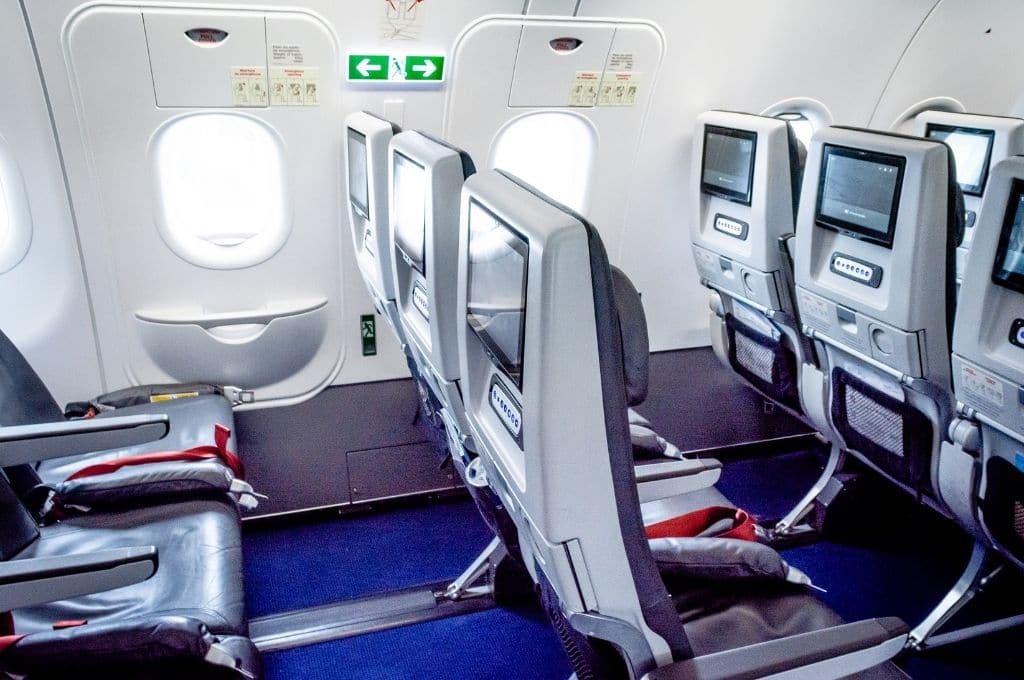
Extra flight attendants beyond the minimum?
Keep in mind that the limits above are just the minimum limits.
So it’s very possible (and likely) that an airline could determine they want to have more flight attendants on board than the minimum.
For example, a 737-800 only requires four flight attendants because they have between 151 and 200 passengers.
However, on longer routes you could come across a fifth flight attendant.
On some of the longer routes with larger aircraft, you may notice that you will find several more crew members on the plane than the minimum numbers (found below) would suggest.
For example, international routes may have a couple of additional flight attendants on board, especially if the flight is full.
Some airlines also may be known for supplying more flight attendants than others. This is particularly true if they place a high value on the level of service they provide.
When flying Emirates on a 777, you could have up to 15 flight attendants, for example. That’s much higher than what the minimum requirements would be in the US based on the FAA.
The last factor is that airlines are constantly changing the size of their employee force based on conditions like the economy.
In the aftermath of the coronavirus pandemic Airlines like American Airlines downsized the crew on major aircraft like the 777.
For example, they dropped the Boeing 777-200 and 787-900 crew from 10 to nine flight attendants.
So just how much beyond the minimum requirements an airline decides to go may depend on how well that airline is doing in the current economy.
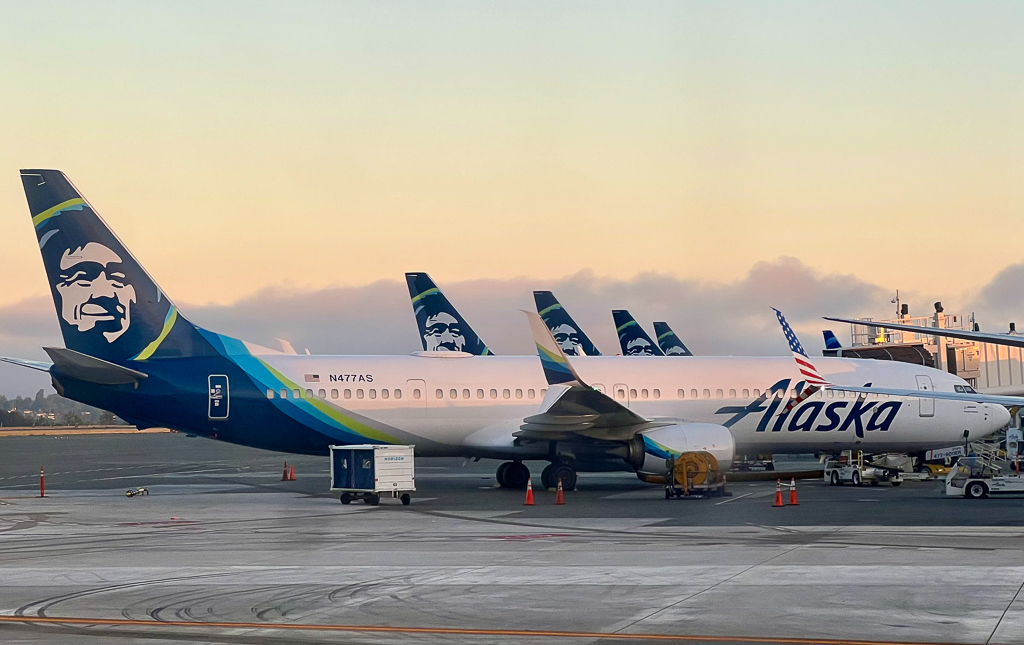
First class and economy cabins
Often times, on a smaller aircraft with only three flight attendants there will be one flight attendant who focuses on the first class cabin and then the remaining two who serve the economy cabin.
This would be what you would find on your typical domestic flight with United Airlines, Alaska Airlines, American, etc.
For a larger aircraft, such as a 3-cabin aircraft on an international route the break down in flight attendants might be something like: two in first class, five in business class, and five and economy.
But on a more downsized two-cabin aircraft you might see something like three/four flight attendants in business class and four in economy.
Don’t forget there is also the purser who is sort of a floater.
If you’re talking about one of the premier first class cabins such as Singapore Suites, you could have three flight attendants serving only six passengers.
That’s quite the impressive ratio!
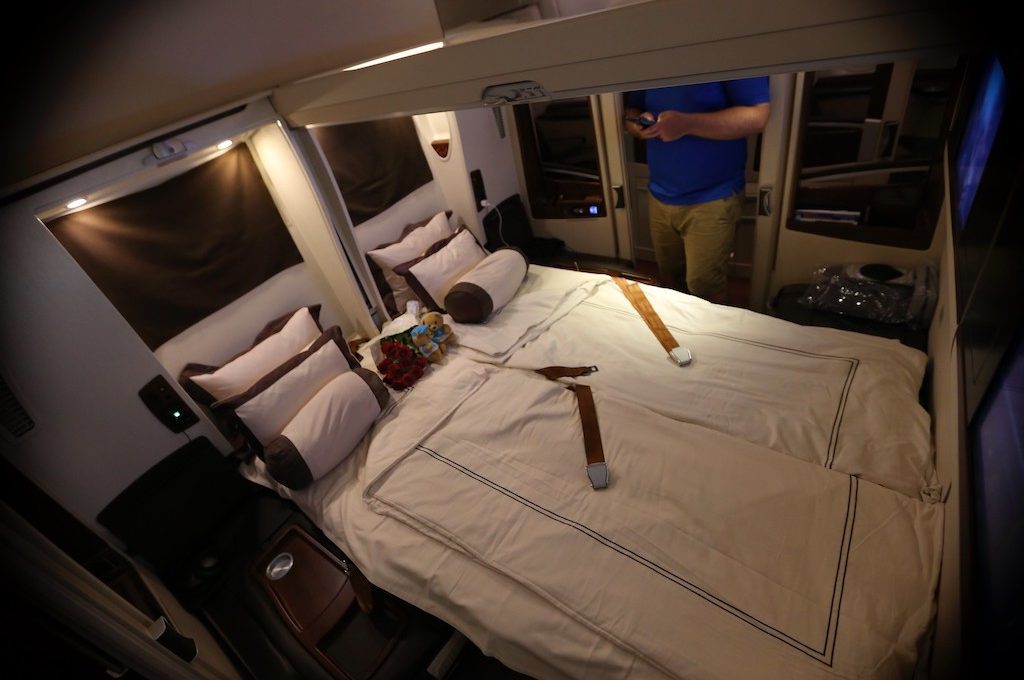
Now let’s take a look at different types of aircraft.
I’ll provide an estimate on the passenger total that they can carry and then a corresponding number of expected (minimum) flight attendants.
The number of total passengers varies because the aircraft can carry a different amount of passengers based on the type of configuration. (The more economy seats that they have, the higher the seat count can be.)
Some sources only provided a single passenger capacity limit while others provided capacity limits based on two class or three class cabins.
Also, different sources provide a different estimate on the total capacity of each aircraft so it’s very possible that you may come across different numbers if you research these numbers yourself.
Still, these estimates should be accurate enough to give you a general idea of how many minimum flight attendants you can expect to find on your flight.
But for the most accurate data, I would check to see exactly how many seats your specific flight will have (perhaps check the seat map for your flight).
You can then divide that by 50 (or just use the chart above) and then add an additional two or three flight attendants if flying on a long-haul flight. That should get you very close to the actual number.
| Aircraft | PAX limit | Flight Attendant # |
| Airbus A380 | 850 | 17 |
| Boeing 747-8 | 467 | 10 |
| Boeing 747-400 | 416 to 524 | 9 to 11 |
| Boeing 777-9 | 550 | 11 |
| Boeing 777-300 | 368 to 550 | 8 to 11 |
| Airbus A340-600 | 380 to 475 | 8 to 10 |
| 787-10 Dreamliner | 336 | 7 |
| A340-500 | 313 to 375 | 7 to 8 |
| Boeing 777-200 | 305 to 400 | 7 to 8 |
| A350-900 | 300 to 350 | 6 to 7 |
| Airbus A330-300 | 300 to 440 | 6 to 8 |
| 787-9 Dreamliner | 296 | 6 |
| A340-300 | 295 to 440 | 6 to 7 |
| 787-8 Dreamliner | 248 | 5 |
| Boeing 767-300ER | 218 to 269 | 5 to 6 |
| Boeing 757-200 | 195 to 231 | 4 to 5 |
| Airbus A321-200 | 191 | 4 |
| Boeing 737-900 | 178 to 220 | 4 to 5 |
| A321ceo | 170 to 210 | 4 to 5 |
| Boeing 737-800 | 162 to 189 | 4 |
| Boeing 737-700 | 126 to 149 | 3 |
| Airbus A319ceo | 110 to 160 | 3 to 4 |
| A220-100 | 100 to 135 | 2 to 3 |
| Embraer 170 | 70 | 2 |
| Embraer 175 | 76 | 2 |
| CRJ700 | 63 to 78 | 2 |
| CRJ200 | 52 | 2 |
Sources: Boeing, AT, AT, Airbus, Delta
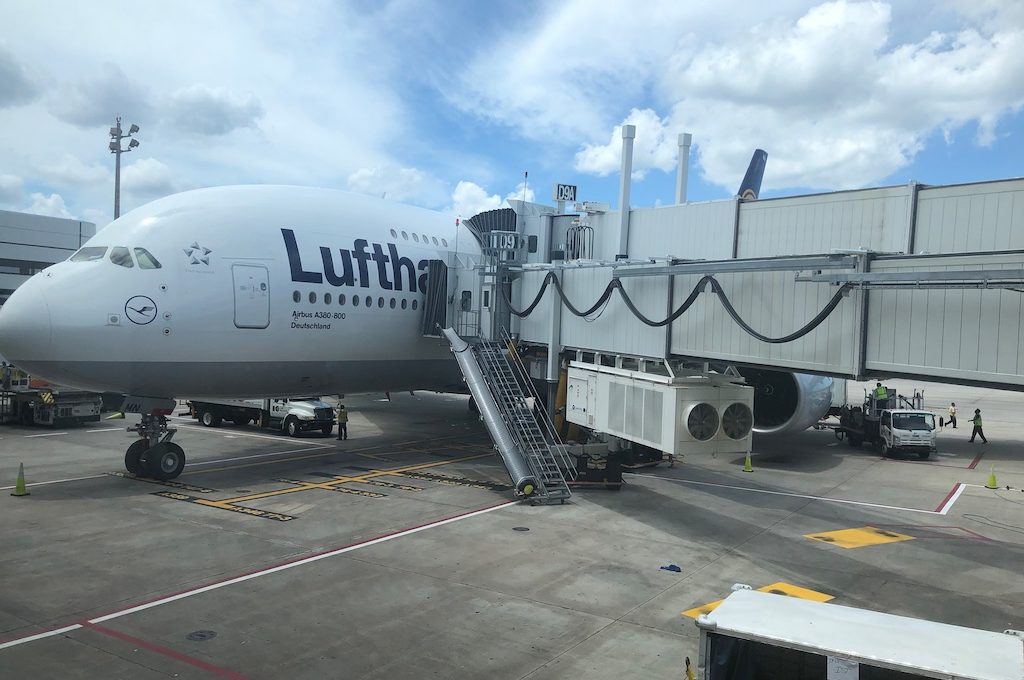
What should you get your flight attendants?
If you want to find out how many flight attendants will be on your plane because you plan on giving them gifts then you may wonder what would be an appropriate gift.
The two most popular types of gifts that seem to go out the flight attendants are chocolates and gift cards.
Everybody loves chocolate but if you go that route make sure that you have the chocolate properly packaged.
Some people will not want to test out food from unknown sources if it looks like it was not commercially packaged.
If you decide to go to gift card route, you can go with a generic gift card that they can spend anywhere or somewhere very popular like Starbucks.
You may want to add on a couple of extra gifts for the pilots on board which may be anywhere from 2 to 3 additional crew members depending on the route.

Final word
For smaller aircraft that you take on a typical domestic flight (737s) it’s pretty easy to estimate the number of flight attendants because they don’t tend to fluctuate very often (usually 3 to 4).
But as you start to look at larger aircraft they have more variations in their configurations and they get treated differently by different airlines. So it’s a little bit harder to predict the number of flight attendants.
Still, if you keep the ratio of one flight attendant for every 50 seats in mind and then add a few additional flight attendants to the total, you usually will be very close to the actual amount found on the airline.
Daniel Gillaspia is the Founder of UponArriving.com and the credit card app, WalletFlo. He is a former attorney turned travel expert covering destinations along with TSA, airline, and hotel policies. Since 2014, his content has been featured in publications such as National Geographic, Smithsonian Magazine, and CNBC. Read my bio.

